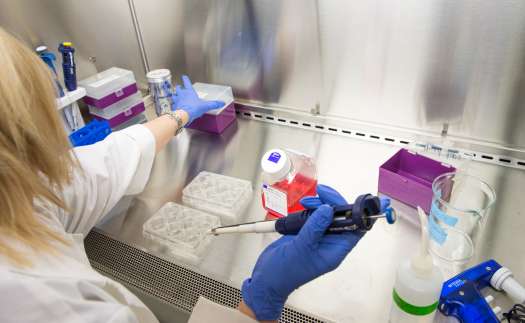Neuroscience
Are you driven to find solutions? Do you want to help people and society by unlocking the mechanisms behind debilitating neurodegenerative diseases and disorders? The neuroscience program at SVSU is hyper-focused and committed to five areas of research and rehabilitative medicine: Alzheimer’s disease, Huntington’s disease, Parkinson’s disease, traumatic brain injury, and stroke. Our students work side-by-side with nationally-recognized researchers, neurologists, and neurosurgeons to publish papers and present and conferences across the nation. We presently have former students that are in top PhD programs at the University of Texas-Austin, the University of Kentucky, the University of Pittsburgh (currently ranked 4th in the country), the University of Rochester, the Medical University of South Carolina, the Uniformed Services University, and so on. Start your Cardinal story today and apply.

PROGRAM COMPONENTS
To prepare for hands-on laboratory research experience, students begin coursework in biology, physiology and anatomy, chemistry, statistics, and healthcare ethics. Neuroscience-related coursework will emphasize the fundamentals while exploring experimental approaches, current techniques, challenges, and concepts. As progress continues, students support classroom learning with active research in the Neuroscience Research Laboratory; in a supportive role with faculty on existing projects or developing their own. The program culminates with field experience with neurologists and/or neurosurgeons in faculty-approved organizations or a capstone research experience. Feed your curiosity, and potentially help those in need!
NEUROSCIENCE RESEARCH LAB
The Neuroscience Research Laboratory at Saginaw Valley State University is currently involved in curcuminoid therapy in the reduction of Alzheimer-type neurodegeneration found in 5xFAD transgenic mice. Curcumin is the principle curcuminoid of turmeric, a plant belonging to the ginger family. It possesses very potent antioxidant activities such as being a scavenger of superoxides and singlet oxygen species. Attempts are being made at reducing amyloid burden through its utilization.


